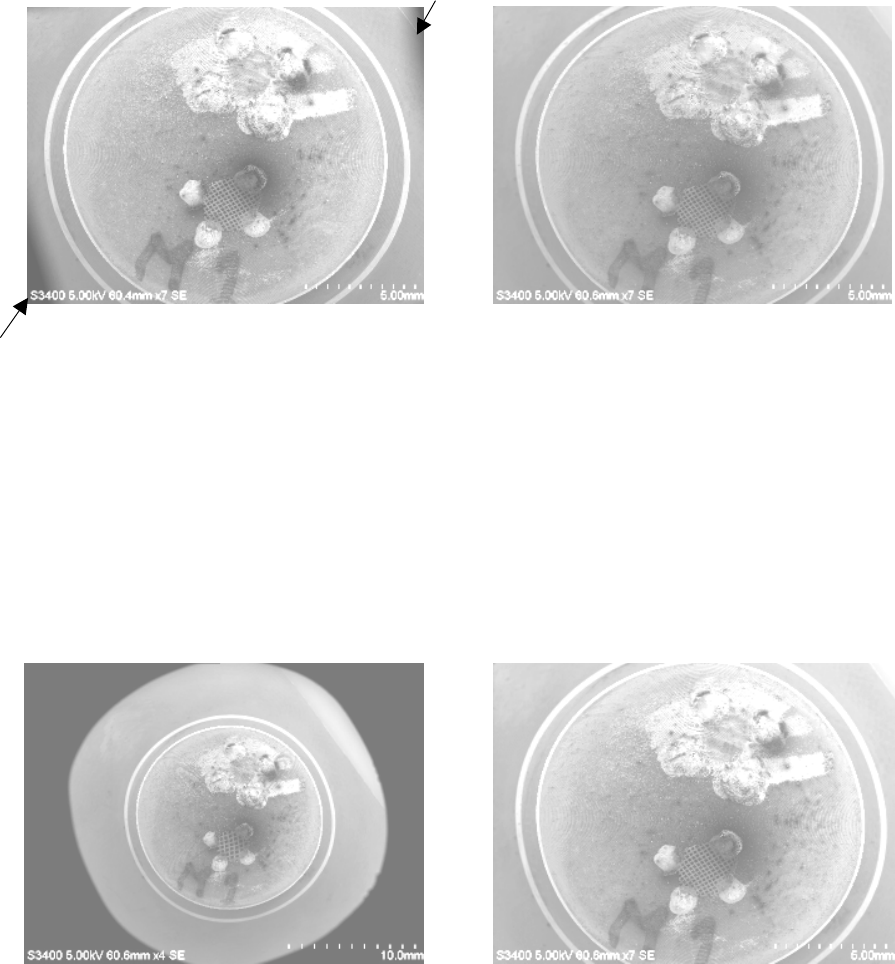
3.5 Operation for Image Observation
3 - 40
(2) Notes on operating at low magnifications.
In the light gray range shown in Table 3.5-2, depending on the particular observation
parameters employed (especially low accelerating voltages or low-magnification at a short
WD), the use of the No. 4 or 3 objective lens movable aperture with Slow scan speed can
produce a shadow, as illustrated in Figure 3.5-11, on the edge of the image. The problem
arises when the electron beam passing through the objective lens movable aperture is
unable to pass through the orifice. It is not arises scan speed is TV/FAST. The problem
can be minimized by increasing the hole diameter for the objective lens movable aperture
(No. 1 or 0).
Fig. 3.5-11 Interference Shadow from Objective Lens Movable Aperture
Left: shadow present, Right: no shadow (objective lens movable aperture No. 0)
In the dark gray range, depending on the particular observation parameters employed (especially
low accelerating voltages and low magnification), when scan speed is Slow, image sometimes
shows a round clipping, as illustrated in Figure 3.5-12. This problem arises when the electron
beam undergoes wide-angle deflection oscillations in order to display the specimen at an
extremely low magnification. With scan speed is TV/Fast, the image could have shadows, as
above.
Fig. 3.5-12 Restricted Shading under an Extremely Low Magnification
Left: present, Right: not present
Shadow
Shadow


















